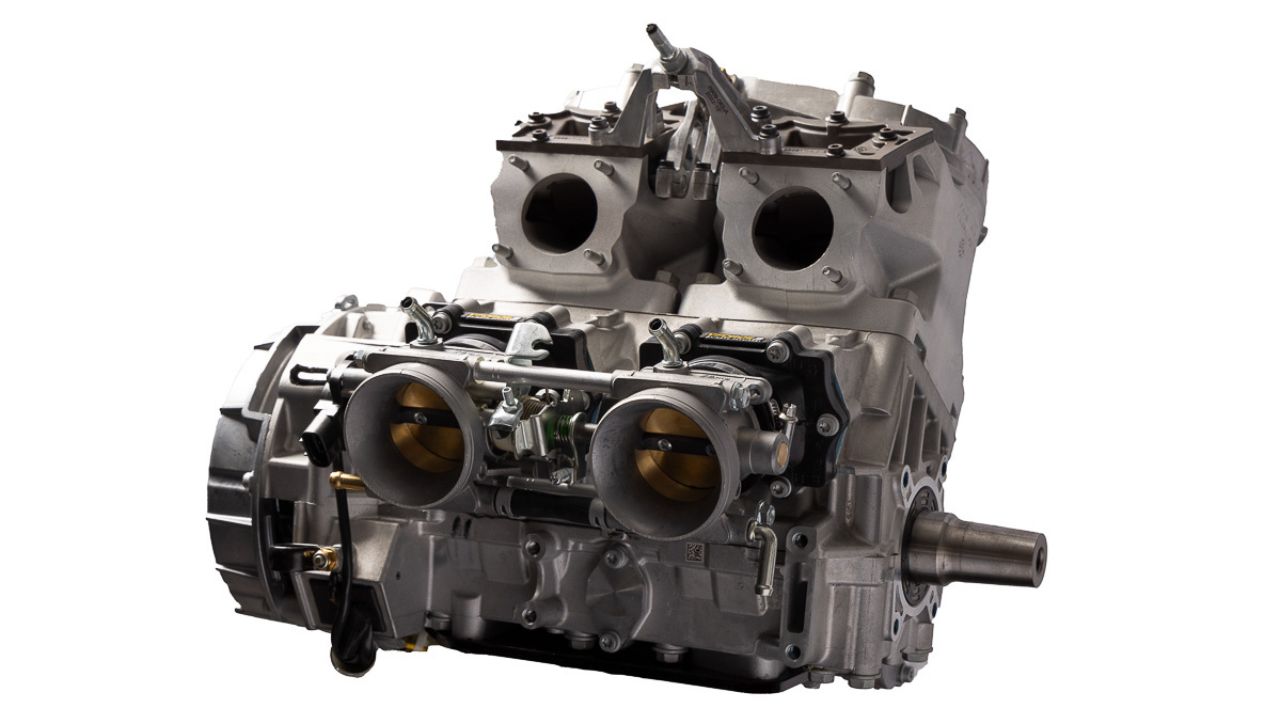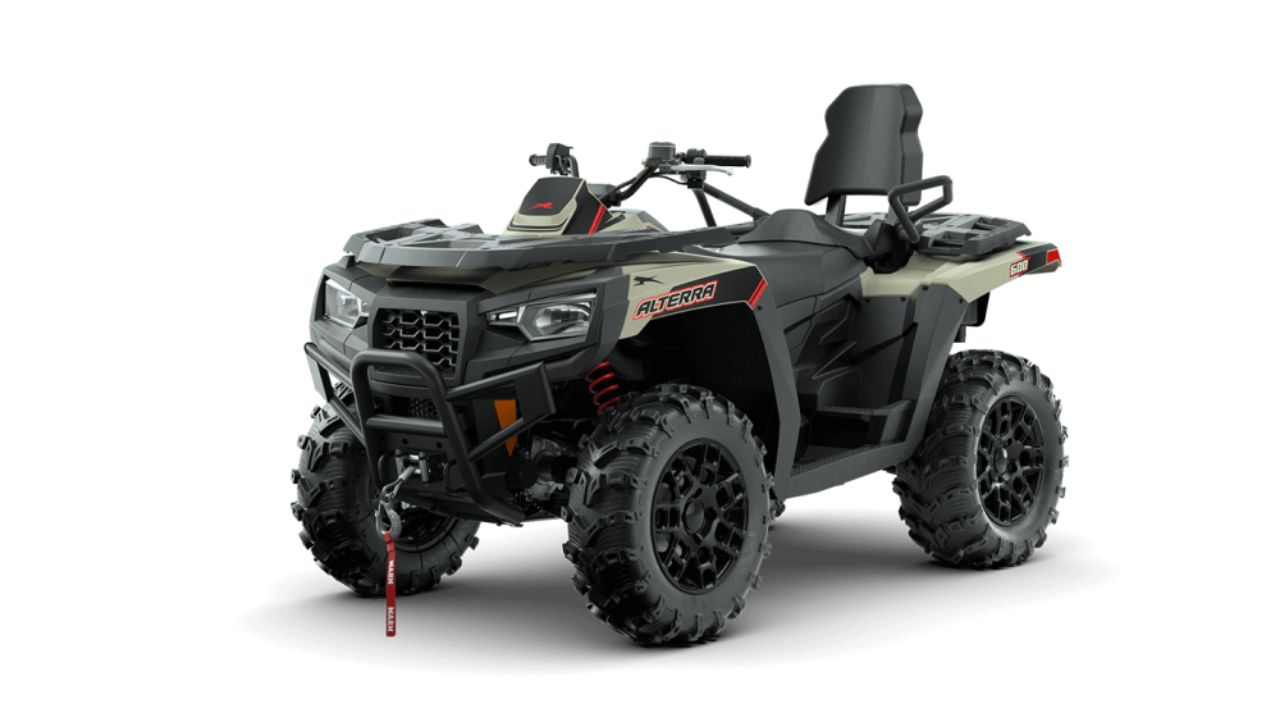Arctic Cat ATVs are renowned for their durability, performance, and reliability. However, like any mechanical device, they can sometimes experience issues. One common problem that ATV owners encounter is when their Arctic Cat ATV won’t start and turns over.
Although this may be annoying, do not panic! You will find a thorough troubleshooting guide in this article to assist you in identifying and resolving this problem. Let’s start and return your Arctic Cat ATV to its rightful place on the trails!
Fuel System
The fuel system is often the first place to check when dealing with starting issues. Here are some possible causes and solutions related to the fuel system:
Fuel Level: Ensure that your Arctic Cat ATV has adequate fuel. Sometimes, an empty or low-fuel tank can lead to starting problems. Refuel if necessary.
Fuel Quality: If the fuel in your ATV is old or contaminated, it may not ignite properly and cause starting issues. After emptying the fuel tank, top it with brand-new, premium gasoline.
Clogged Fuel Filter: The engine may not be able to start due to a blocked fuel filter that restricts fuel passage to the engine. Examine the fuel filter and change it if required.
Stuck Float: In gravity-fed models, a stuck float in the carburettor can cause fuel overflow, flooding the engine and preventing it from starting. Clean or replace the carburettor if needed.
Electrical System
Your Arctic Cat ATV’s electrical system is essential to its operation. Here are some potential electrical-related causes and solutions:
Battery: Examine the voltage of the battery with a multimeter. If the battery is weak or discharged, it may not have enough power to start the ATV. Charge or replace the battery as necessary.
Spark Plug: A fouled or worn-out spark plug can prevent ignition and cause starting issues. Inspect the spark plug, clean it, or replace it if needed.
Ignition Switch: Ensure the ignition switch is in the correct position and functioning correctly. Faulty switches can disrupt the starting process.
Wiring Connections: The ATV may not start due to loose or corroded wire connections interfering with the electrical flow. Inspect all wiring connections and clean or tighten them if necessary.
Engine Mechanical Issues

Sometimes, the problem lies within the engine itself. Here are a few mechanical issues that can cause starting problems:
Compression Loss: Low compression in the engine cylinders can make it difficult for the ATV to start. Perform a compression test to check the compression levels. If they are below the manufacturer’s specifications, consult a professional mechanic.
Timing Chain: A worn or damaged timing chain can cause the engine’s timing to be off, resulting in starting issues. Inspect the timing chain and replace it if necessary.
Valve Clearance: Incorrect valve clearance can affect engine performance, including starting. Check and adjust the valve clearances according to the manufacturer’s specifications.
Additional Considerations
Air Intake System: Ensure the air filter is clean and debris-free. Starting may be impacted by an obstructed air filter that restricts airflow.
Safety Switches: Arctic Cat ATVs have various safety switches, such as the neutral and brake switches. Make sure these switches are engaged properly and functioning correctly.
Professional Assistance: When all other troubleshooting methods have been tried and your Arctic Cat ATV still won’t start, it might be time to call an expert. A skilled technician with knowledge of Arctic Cat’s ATV can identify and fix the problem more precisely.
Carburetor Issues
Before gasoline and air reach the engine, the carburettor must blend them proportionately. If there are issues with the carburettor, it can affect the starting process. Here are a few carburettor-related causes and solutions:
Clogged Jets: The jets in the carburettor can become clogged with debris or varnish build up over time. He can restrict fuel flow and prevent the ATV from starting. Clean the jets thoroughly using carburettor cleaner, or consider rebuilding the carburettor if necessary.
Idle Adjustment: An incorrect idle adjustment can cause starting problems. If the idle speed is too low, the ATV may not start. Attach the idle screw according to the manufacturer’s specifications.
Choke Operation: The choke helps provide a richer fuel mixture during cold starts. Ensure that the choke is functioning correctly and is properly engaged when starting the ATV in colder conditions.
Fuel System Venting
Fuel cannot reach the engine if a poorly ventilated fuel system causes a vacuum in the fuel tank. This can lead to starting issues. Check the fuel tank vent and ensure it is clear of any obstructions. Clean or replace the vent if necessary.
Proper fuel system venting is essential for efficiently operating your vehicle’s engine. To avoid a vacuum from building and provide a constant fuel supply to the engine, the venting system permits air to enter the fuel tank as gasoline is used.
A malfunctioning or blocked vent can lead to fuel flow issues, causing starting difficulties and potentially damaging the fuel system. Regularly inspecting and maintaining the fuel system venting helps maintain optimal performance and prevent potential fuel delivery problems.
Environmental Factors
Sometimes, external factors can contribute to the problems. Consider the following environmental factors:
Extreme Cold Weather: In extremely cold weather, the engine’s oil might become thicker, making it harder for the ATV to start. Consider using a lower-viscosity oil or a block heater to assist with cold starts.
Moisture and Condensa ion: Moisture can accumulate in the fuel system, especially during periods of high humidity. Use a fuel stabiliser to prevent moisture build up, and consider draining any excess moisture from the fuel system.
Regular Maintenance

Maintaining your car at peak condition and averting future problems requires routine maintenance. According to the manufacturer’s suggested maintenance plan, you can ensure that important parts like the engine, brakes, and tyres are routinely examined and repaired.
This helps to identify and address any wear and tear or potential problems before they escalate, improving the longevity and performance of your vehicle. Recognise the value of routine maintenance to keep your car in good working order and prevent expensive repairs.
Conclusion
Dealing with an Arctic Cat’s ATV that won’t start and turn over can be frustrating, but with this troubleshooting guide, you have a solid foundation to diagnose and resolve the issue. Remember to thoroughly check the fuel, electrical, and engine mechanical components.
Always prioritise safety and consult professional assistance if needed. Soon enough, you’ll be back on your Arctic Cat’s ATV , confidently enjoying the great outdoors!
FAQ
Why does my ATV turn over but not start?
Why is my Arctic Cat’s ATV engine cranking but not starting? This may be due to issues with the fuel system, ignition system, or engine compression. To identify and fix the issue, conduct a comprehensive examination and adhere to the instructions in this article.
Why does my Chinese ATV have spark and fuel but will wait to start?
If your Arctic Cat’s ATV has spark and fuel, there are a few things you can check to determine the cause of the problem. The fuel may be struggling to get from the tank to the engine. This could be due to a clogged fuel line, a faulty pump, or a blocked filter. Another possibility is that the spark plug isn’t firing correctly.
Why does my bike turn over but not start?
This usually indicates a weak battery because it cannot both crank and provide enough juice for a strong spark. By bump starting, you eliminate the need for juice to crank, allowing enough for a good spark.
This has been true a few times on my fuel-injected VFR800s. The result was a replacement battery.
Why would a vehicle turn over but not start?
The cranking continues, but the usual sound of the engine roaring to life doesn’t happen. If this happens to you, chances are it’s not the starter.
Instead, it’s likely because your engine needs to get at least one of the four major components it needs to start: fuel, air, spark, or compression.
How Did the Arctic Cat Start?
This popular brand was formed by Edgar Hetteen in 1960 after he left Polaris Industries, another self-starting business. A pioneer in his craft, Hetteen developed the Boss Cat line throughout the ’60s and ’70s under Arctic Cat’s old name, Arctic Enterprises.


Your article helped me a lot, is there any more related content? Thanks!